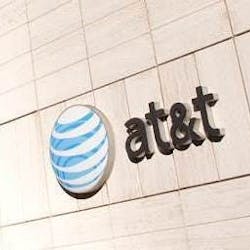Fiber broadband deployment set a new historical record in 2023, passing nine million new homes at a growth rate of 13% year-over-year, according to the latest research performed by RVA Market Research & Consulting. The 2023 North America Fiber Provider Survey, sponsored by the Fiber Broadband Association (FBA), concluded that 77.9 million U.S. homes were passed with fiber, with nearly 52% of all the nation’s unique homes and businesses passed.
We expect many more homes and businesses to obtain access to fiber over the next five years due to several factors. The last $10 billion U.S. Treasury American Rescue Plan (ARP) funding for infrastructure projects such as broadband networks is being distributed this year. The $42.5 billion in NTIA BEAD funding available over the next few years will significantly contribute to enabling and upgrading communities across America with the high-speed, low-latency broadband necessary for participation in today’s 21st-century society. We are seeing a steady stream of NTIA approvals and expect the first states to make BEAD awards in the second half of 2024.
But it’s not just the federal government investing in fiber nationwide. The cable industry continues to deploy fiber in greenfield projects, often expanding its territorial coverage and competitive builds in larger markets to match existing fiber service offerings. At the same time, telecom providers of all sizes are expanding their fiber networks in existing and new markets.
Private capital markets also support fiber projects, investing in new service providers or working with existing providers such as AT&T to build new fiber networks. Investors view fiber projects as a low-risk, long-term return on investment, especially in areas where existing copper infrastructure has been overdue for replacement, with a future exit that could include selling and rolling up smaller properties in a merger and acquisition strategy.
Multi-gig emerges
The fiber-based “gigabit city” was an aspirational dream a decade ago. Today, 1 Gbps service is essentially table stakes in the broadband world. Deployment of multi-gig services enabled by XGS-PON emerged as the industry standard in 2023, while service providers are already evaluating and deploying 25G PON services in some markets. Google Fiber is the most notable so far to offer 20 Gbps services.
The need for higher speed will intensify in the years to come as cable moves towards 10 Gbps services – ironically supported by more fiber in their legacy coax networks – with pure-play fiber networks already positioned to move from 25G PON to higher speeds. The only debate among service providers is to make a near-term decision to migrate existing XGS-PON networks to 25G PON or see what emerges in 50G PON technologies and pricing. Regardless, there is a clear and unfettered growth path to 100G PON for local service delivery. At the same time, core network speeds increase from hundreds of megabits to terabit speeds in parallel with usage and demand.
What will consumers do with 20 Gbps and faster speeds? The answer is “Whatever they want!” Where available, multi-gig and 20 Gbps services are already seeing consumer uptake by leading-edge households and businesses, with pent-up desire by businesses appearing to drive initial sales. In addition, 25G PON is an essential technology for supporting near-term 5G and edge-computing deployments. You can’t keep 5G multi-gigabit speeds to the cell site with a 1 Gig service.
Innovations continue to drive the immediate and long-term need for more high-speed, low-latency, resilient, and reliable high-speed broadband that only fiber can provide today and for many tomorrows to come. The AI boom of 2023 and the steady growth of AR/VR/XR applications are the products of the near-infinite fiber capacity to support such high-speed, low-latency applications. It’s mind-boggling to hear NVIDIA predicting a doubling of data center locations to support AI in the next few years. I don’t know where the power will come from, but the broadband capacity will be all-fiber from the data center to the home.
The only short-term issue for 2023 in the larger fiber industry ecosystem was on the supply side due to what I would call our version of “Long COVID.” Suppliers built up excess inventory in 2023 to compensate for pandemic-related challenges, with fiber-related equipment inventory peaking during the year with an average of nine months of stock on hand. This inventory was drawn down in the second half of 2023, with FBA estimating that fiber-related inventory will normalize during the first half of 2024.
We expect additional positive adjustments to the U.S. fiber ecosystem and supply chain as companies continue onshore production of materials and finished equipment here in the states due to onshoring efforts stimulated by “Build America, Buy America” (BABA) provisions included in BEAD.
Improving the fiber ecosystem
The Fiber Broadband Association has five critical priorities for 2024:
1) Fiber is critical multi-generational infrastructure: Deploying broadband to unserved and underserved areas shouldn’t be a lowest-cost effort meeting minimum speeds or providing “good enough” solutions that need recapitalization every three to five years. The penny-wise, pound-foolish policies to support DSL in the past and occurring now with fixed wireless and satellite solutions are temporary bandages, not long-term investments.
Fiber provides a long-lasting, multi-generational medium much more resilient and future-proof than any other in operation or envisioned. It offers unique opportunities unavailable with wireless solutions vulnerable to weather extremes, solar flares, and EMP.
2) Accelerating deployment is vital: Anything that slows down deployment will drive up costs and lower efficiencies. Streamlining permitting and utility locates is paramount in avoiding and reducing delays. In addition, supply chains must continue to be correctly and proactively managed to prevent disruptions.
3) Protect our nation’s critical broadband infrastructure: Last year, FBA completed its Trusted Fiber 1.0 white paper and is now working with policymakers to promote the concepts crucial in protecting the nation’s vital communication networks. Fiber’s physical security compared to satellite or wireless solutions is unquestionable.
4) Workforce development: There is a recognized shortage of skilled technicians to build and operate telecommunications networks. FBA, with its various partners, is working to fill the jobs pipeline and educate potential recruits on the value of being in the fiber industry.
Last year, FBA published a Broadband Workforce Development Guidebook distributed nationwide to all state broadband and workforce development offices. FBA continues to roll out its Optical Telecom Installer Certification (OpTIC Path™) program to nationwide community colleges and learning institutions.
5) Adoption and Affordability: Simply passing homes with fiber is insufficient. FBA is working to ensure that everyone can participate equally in our digital future. Our nation must support affordable broadband options and programs, deliver devices to those in need, and provide training and digital navigators for struggling populations.
We support the Affordable Care Program (ACP) and digital literacy investments at the state, federal, and local levels to close the economic and skills gap among vulnerable and economically disadvantaged populations.
A rich fiber future
The payoffs and return on investment for fiber broadband networks are multifold and multigenerational. FBA continues to document fiber success stories, such as EPB’s investment yielding over a billion dollars in economic benefits over the past decade in Chattanooga, Tenn. Fiber is enabling 5G to grow and thrive, improving health care and patient outcomes, creating high-paying jobs, enlarging the local tax base for communities across the country, providing equitable access to education, improving energy delivery, and reducing carbon emissions.
Beyond simple data transfer, existing fiber optic data network cable is a unique sensing media today by measuring the quality of light pumped between two physical points. Applications include ways to analyze vehicle traffic, sense sound vibrations from gunshots, potholes, and the buzzing of insects, and the ability to detect, monitor, and image the process of earthquakes, and discover new geothermal resources.
Fiber will also play a key role in unlocking the vast potential of quantum technologies, providing next-generation security for our nation’s networks and building better, more sensitive sensors to measure everything within unimaginable levels. Constructing a quantum internet using fiber to link together quantum computers around the country will create the infrastructure to solve previously “unsolvable programs” in materials science, drug development, astronomy, and large-scale sensing. The Department of Energy has published a report outlining the construction of a nationwide “Quantum Internet” and the scientific and engineering challenges to build such a network over the next decade.
Sensing using existing data networks and quantum connections are two possibilities emerging from deploying today’s fiber. I look forward to seeing what innovations and growth fiber brings to 2024 and the following decades.
Gary Bolton is president and CEO of the Fiber Broadband Association, the largest trade association dedicated to all-fiber-optic broadband. Before FBA, Gary held executive management positions in marketing, product line management, and public policy at two successful venture-backed high-tech start-ups and large publicly traded companies. Gary is also an adjunct business administration and management science professor at the University of Alabama in Huntsville. He holds an MBA from Duke University and a BS in Electrical Engineering from North Carolina State University.






